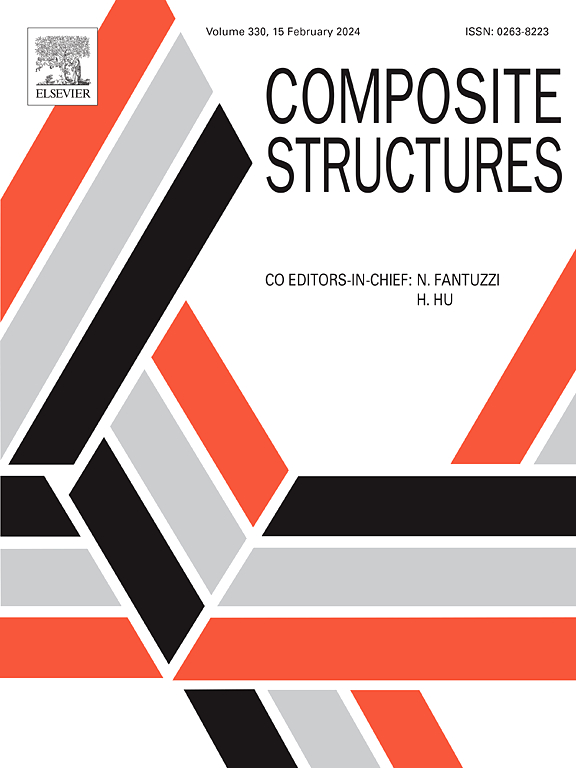Self-sensing and piezoresistive performance of carbon fibre textile-reinforced cementitious composites under tensile loading
IF 6.3
2区 材料科学
Q1 MATERIALS SCIENCE, COMPOSITES
引用次数: 0
Abstract
This paper introduces an advanced self-sensing technique for two-dimensional carbon fibre textile-reinforced concrete (TRC) under monotonic tensile loading to monitor cracking behaviour, textile-matrix bond performance, fibre slippage, and cover spalling. The study employs single-sensor and multiple-sensor techniques to capture both global and local TRC behaviours, including crack quantification and location. It examines the conductive mechanism and evaluates piezoresistive performance in elastic and post-elastic regimes. Results demonstrated that the single-sensor technique provided comprehensive monitoring, while the multi-sensor approach improved crack detection. The conductive mechanism, driven by the carbon fibre network, exhibited dynamic changes with mechanical deformation, with the fractional change in measured resistance () varying based on reinforcement orientation. Optimal performance was associated with higher-quality matrices and specific reinforcement orientations. The behaviour was linear within the elastic regime until the first crack, with significant drops at each crack location and exponential decay in the post-elastic regime. In the crack widening and failure stages, the plateaued and exhibited partially reversible behaviour, indicating plastic deformations. The extent of the drop was correlated with the degree of debonding at the sensor terminals. This work offered an effective technique for TRC monitoring and laid a foundation for future research in this area.
求助全文
约1分钟内获得全文
求助全文
来源期刊

Composite Structures
工程技术-材料科学:复合
CiteScore
12.00
自引率
12.70%
发文量
1246
审稿时长
78 days
期刊介绍:
The past few decades have seen outstanding advances in the use of composite materials in structural applications. There can be little doubt that, within engineering circles, composites have revolutionised traditional design concepts and made possible an unparalleled range of new and exciting possibilities as viable materials for construction. Composite Structures, an International Journal, disseminates knowledge between users, manufacturers, designers and researchers involved in structures or structural components manufactured using composite materials.
The journal publishes papers which contribute to knowledge in the use of composite materials in engineering structures. Papers deal with design, research and development studies, experimental investigations, theoretical analysis and fabrication techniques relevant to the application of composites in load-bearing components for assemblies, ranging from individual components such as plates and shells to complete composite structures.
 求助内容:
求助内容: 应助结果提醒方式:
应助结果提醒方式:


